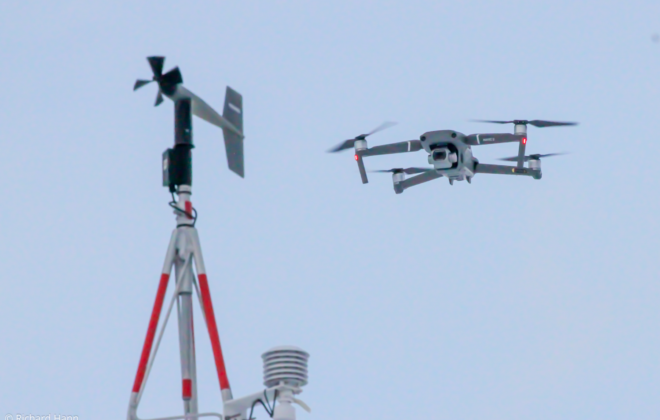Using drones to count reindeer in Svalbard
In our new publication, we present the results of using drones to count reindeer in Svalbard. The work is based on fieldwork results that we collected in a summer campaign in 2021. The work was conducted in collaboration with NTNU, UNIS, and the Norwegian Polar Institute.
One way of estimating animal populations is to establish a sampling site and count all individuals within. Then, using statistical methods, an extrapolation can be made that estimates the population size for a larger area. In Svalbard, such counts are typically conducted by the local authorities (Sysselmesteren) via helicopter in the Sassendalen area. Obviously, counting reindeer with a helicopter has a significant negative environmental impact (noise & fuel emissions). Our research project aims at developing a greener alternative to this established method using drones.
Our results show that drones are a feasible method to count reindeer with low impact on the environment and without disturbing the animals. We found that aerial images from an altitude of 120m are well-suited to detect reindeer and to some degree also classify the (male/female/calf). One major challenge we encountered was that the area that was surveyed by drone was limited (ca. 16 km²). As a result, the statistical significance of the abundance calculations was low. Furthermore, the low coverage meant that there were relatively few individuals captured in the images.
For future implementations of this method, we recommend using larger drone systems that can cover a larger area. In our study, we used a small commercial off-the-shelf multirotor system (DJI Mavic 2 Enterprise). Using larger, fixed-wing UAVs would allow to cover substantially larger areas. This would significantly increase the statistical significance of the population estimations. Furthermore, larger datasets would open the door of using automated counting of reindeers in the pictures with machine-learning methods. This would significantly decrease the time required to post-process the images.

The Svalbard reindeer (rangifer tarandus platyrhynchus) is an endemic subspecies of reindeer that is exclusively found in Svalbard. The reindeer colonized Svalbard, most likely from the Russian Arctic, after the last ice age and has since then adapted to the harsh Arctic environment in Svalbard. Compared to other reindeer, the Svalbard reindeer is smaller, with shorter legs, and thicker fur. The Svalbard reindeer almost went extinct by the beginning of the 20th century due to overharvesting, but their population has almost recovered over the last decades. Today, their population size is closely monitored with about 22,000 reindeer in Svalbard.
Publication: Paulsen, I.M.G., Pedersen, Å.Ø., Hann, R., Blanchet, M.-A., Eischeid, I., Van Hazendonk, C., Ravolainen, V.T., Stien, A., Le Moullec, M., (2023). How Many Reindeer? UAV Surveys as an Alternative to Helicopter or Ground Surveys for Estimating Population Abundance in Open Landscapes. Remote Sensing, 15(1). DOI: 10.3390/rs15010009
Dataset: Hann, R. (2022). Drone-based mapping of Sassendalen for reindeer counting in Svalbard. DataverseNO, Version 1. DOI: 10.18710/KHQKWH



